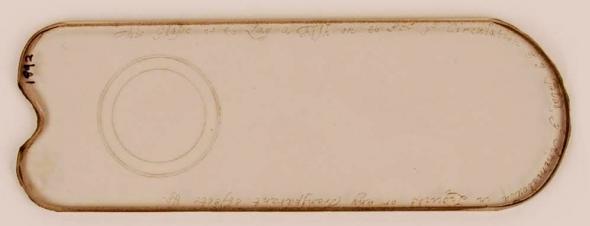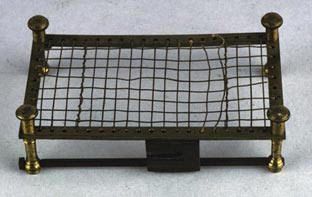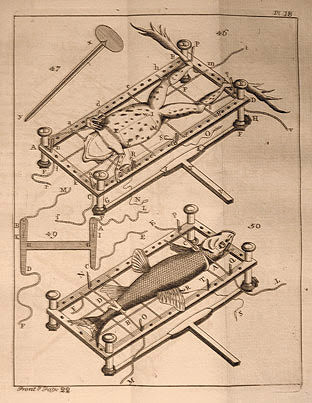Blood circulation
The circulation of blood was only fully understood during the 17th century. William Harvey (1578-1657) proposed the circulation of blood, based on his dissection work on the heart. Whilst Harvey's theory became generally accepted, it had one major flaw: he could not account for the movement of blood between arteries and veins, and for his theory of circulation to make sense this movement was necessary. Circulation was only fully understood after Harvey's death, when Marcelo Malpighi and Antoni van Leeuwenhoek observed capillaries, tiny blood vessels that carry the blood between arteries and veins.
A microscope capable of magnifying roughly 100 times is capable of showing capillaries, and at the beginning of the 18th century these microscopes were becoming available for interested and educated members of the public. Microscopes were often sold with a selection of prepared slides, and also with a 'frog-plate' or 'fish-plate'. The Whipple Museum has three such accessories, which allow a fish or a frog to be strapped down for observation. On this page are examples of glass and brass frog-plates.
Once the frog or fish tied down, capillaries can be seen in the leg or fin as long as a sufficiently strong light is shone through the animal.






